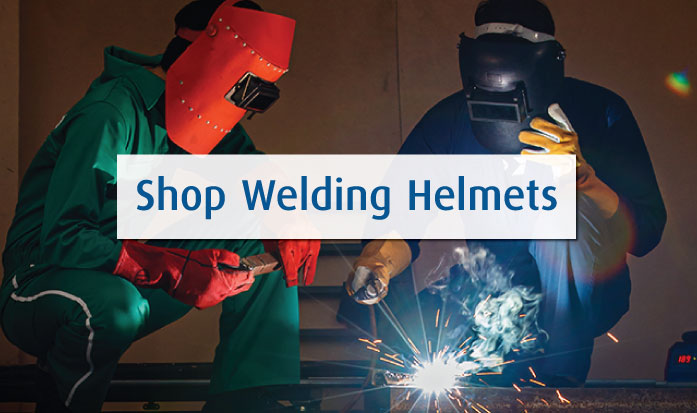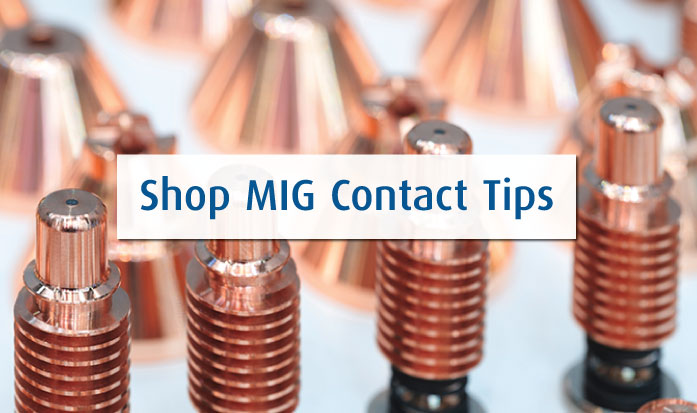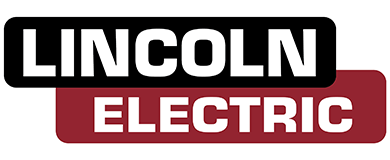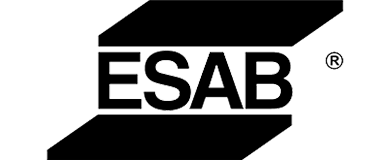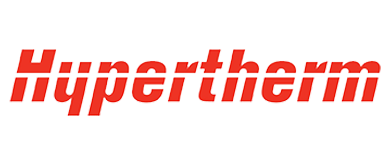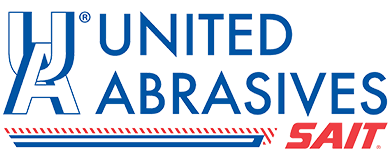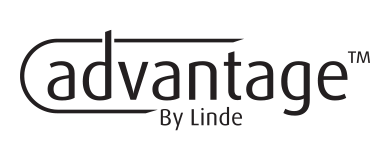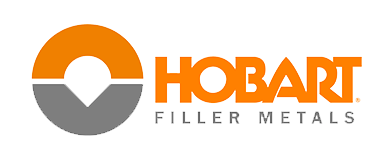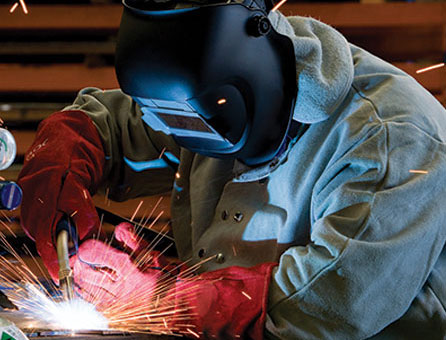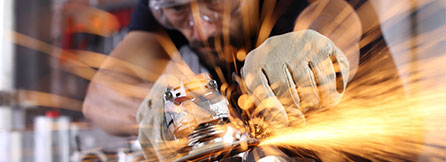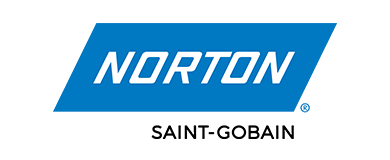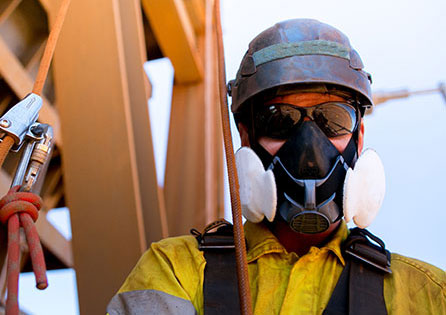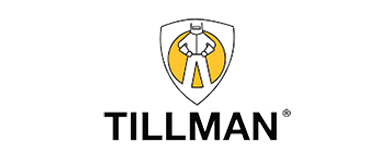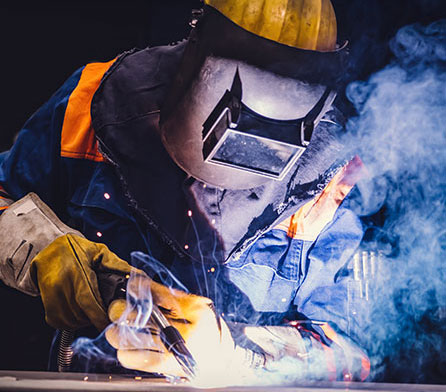How Do You Use a Cutting Torch?
One of the important tools in oxy-acetylene welding is the cutting torch. In this article, we'll explain the difference between a cutting torch and a welding torch, how to use a cutting torch properly, and provide some tips for cutting and welding with oxy-acetylene.


How Is Torch Cutting Different from Torch Welding?
A welding torch consists of a handle, such as a Victor WH315FC+ handle, joined with a welding nozzle,
like a Victor 0-W nozzle. Oxygen and acetylene are mixed in the handle using the valves. Each nozzle is designed
for welding a particular thickness of metal. For each different thickness of metal, the appropriately sized welding nozzle must be used.
A cutting torch is different but still begins with a torch handle, the mentioned Victor WH315FC+ for
example, joined with a cutting attachment, such as a Victor CA2460+. It also requires a cutting
tip, such as a 1-1-101, which is installed in the cutting attachment.
The mentioned
models are commonly used but there are various series of torch handles, welding nozzles, cutting attachments, cutting tips and other types of gas equipment. Choosing the appropriate series for your needs can depend upon the thickness of materials
being used in your project, your budget for equipment purchases, and if your work is occasional, regular, or industrial in nature. Please speak with your Linde representative for help in choosing the appropriate equipment.
In a cutting torch, there are two gas paths. The first is very similar to a welding torch where oxygen and acetylene are mixed in the torch. When lit, this is called the preheat flame, which brings the metal to be cut up to temperature so it can be cut. When the metal is preheated to temperature, a separate stream of oxygen is fed through the cutting attachment and center hole of the cutting tip. This is activated and controlled by the lever/handle on the cutting attachment. When released, this centered stream of oxygen blows the molten metal away from the workpiece, severing or cutting the metal.

Learning how to use a cutting torch is an essential skill for anyone interested in oxy-acetylene welding. Getting started may seem daunting at first, but with the right information, knowledge and application you can learn how to do it safely and become proficient in using this versatile tool. Following instructions and practicing often will help you become a pro at using an oxy-acetylene torch.
How to Use a Cutting Torch
ALWAYS FOLLOW SAFE PRACTICES WHILE WELDING OR CUTTING.
Safe use of a cutting torch requires skill composed of knowledge, training, and experience. In addition, always follow the instructions provided by the manufacturer of the equipment you are using to cut. Here's a basic guide on how to use a cutting torch:
Step 1: Check Your Equipment
Before you begin using your cutting torch, verify that your equipment is properly set up and ready to use. This includes connecting regulators to your oxygen and acetylene tanks as well as the hoses from the regulators to the torch and attaching the appropriate tip for the type of cutting you'll be doing. Next, back out the regulator adjustment screws and close all torch valves.
Slowly open the oxygen and acetylene cylinders to fully open. Then set your regulators to correct pressure for the cutting tip you will be using. The target pressures will be found on a cutting tip chart, such as those published by Victor. These charts reference the thickness of the metal to be cut along with the correct cutting tip and gas pressures. Next, separately purge the hoses to help ensure there is no mixed gas in the lines. Open the acetylene torch valve for a few seconds. Then close and repeat with the oxygen valve.
Step 2: Light the Torch
To light the torch, begin by making sure the torch is pointing in a safe direction. Continue by opening the oxygen torch handle valve to wide open, then carefully open the acetylene torch handle valve on the handle to 1/8 – 1/4 turn and use a friction-based striker to ignite the flame at the tip.


Step 3: Adjust the Flame

Once your flame is lit, continue to open the acetylene torch handle valve until the flame shows no sign of soot. Next, you need to adjust the torch to a neutral flame, which has equal amounts of oxygen and acetylene, which is generally best for welding and cutting. To achieve a neutral flame, you can slowly open the preheat oxygen valve on the cutting attachment until the flame turns blue and the inner cone becomes more concentrated. Once the outer flame feather and the inner cone are about the same size, you are ready to cut.
Step 4: Cutting
To cut with the cutting torch, hold the torch in place at a 90-degree angle, just above the edge of the metal you are cutting, to pre-heat the workpiece. As the metal begins to glow and melt, squeeze the cutting attachment handle to release the cutting stream of oxygen. As the cut begins, continue holding the handle down and slowly move the torch in a straight line, using the flame to melt and cut through the metal.
Step 5: Turn Off the Torch
Once you've finished welding or cutting, turn off the torch. To turn off the torch, first close the preheat oxygen valve on the cutting attachment, followed by the oxygen valve on the torch handle. Turn the fuel gas valve on the torch handle off to extinguish the flame. Next, close the regulators by unscrewing the adjustment handles and close the tank valves. Last, bleed any remaining gas from the hoses by opening the torch head valves and then close them once the gas has stopped flowing.

The information provided here is just an overview offered for the convenience of the reader and not a substitute for education, training, and development of the skills needed to use a cutting torch safely and effectively.




